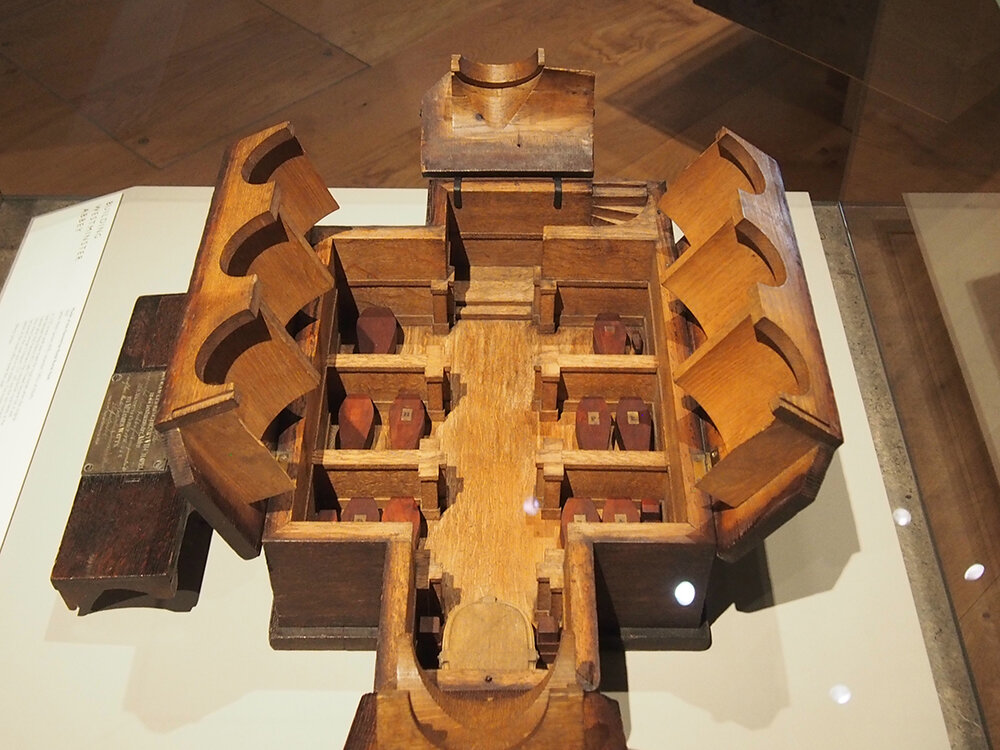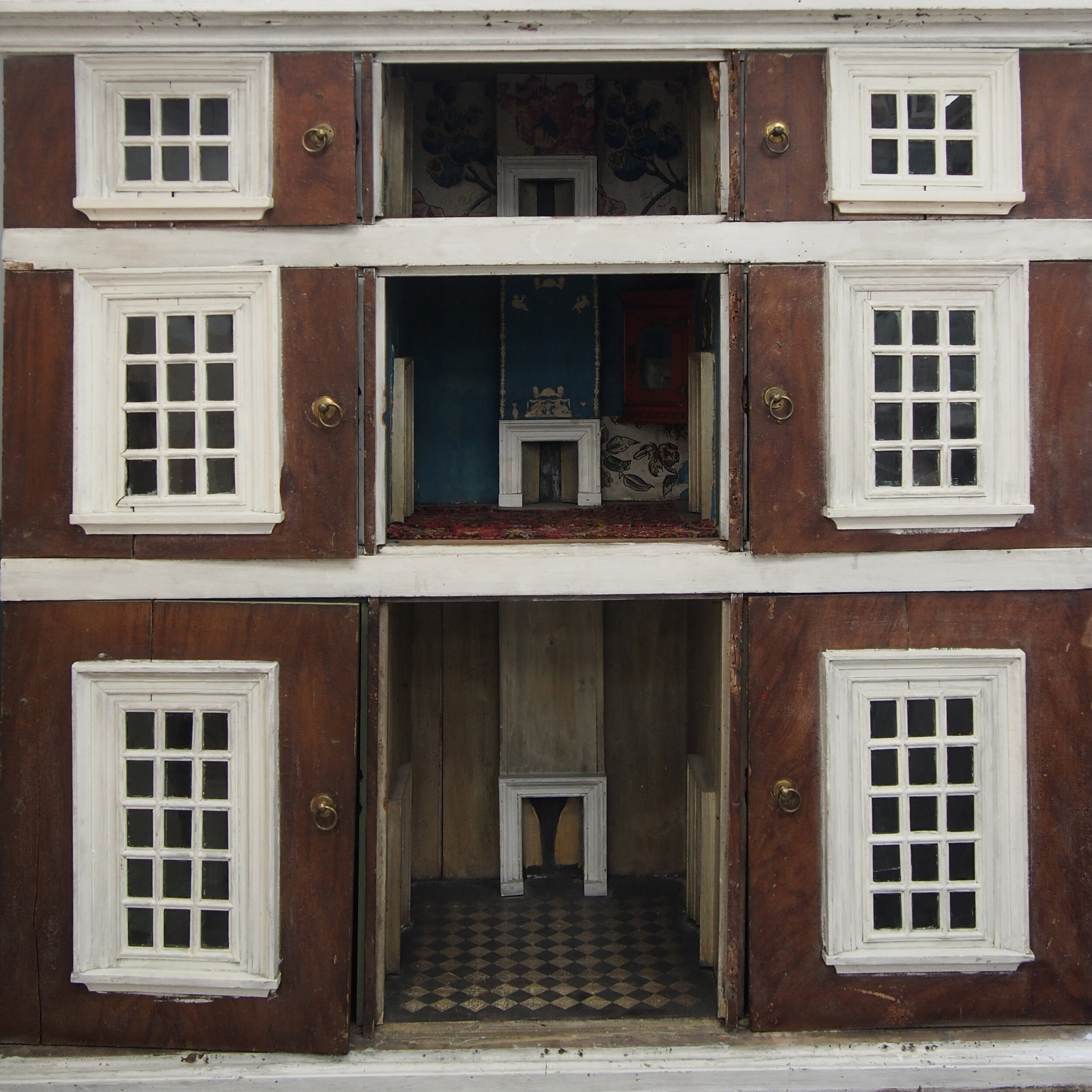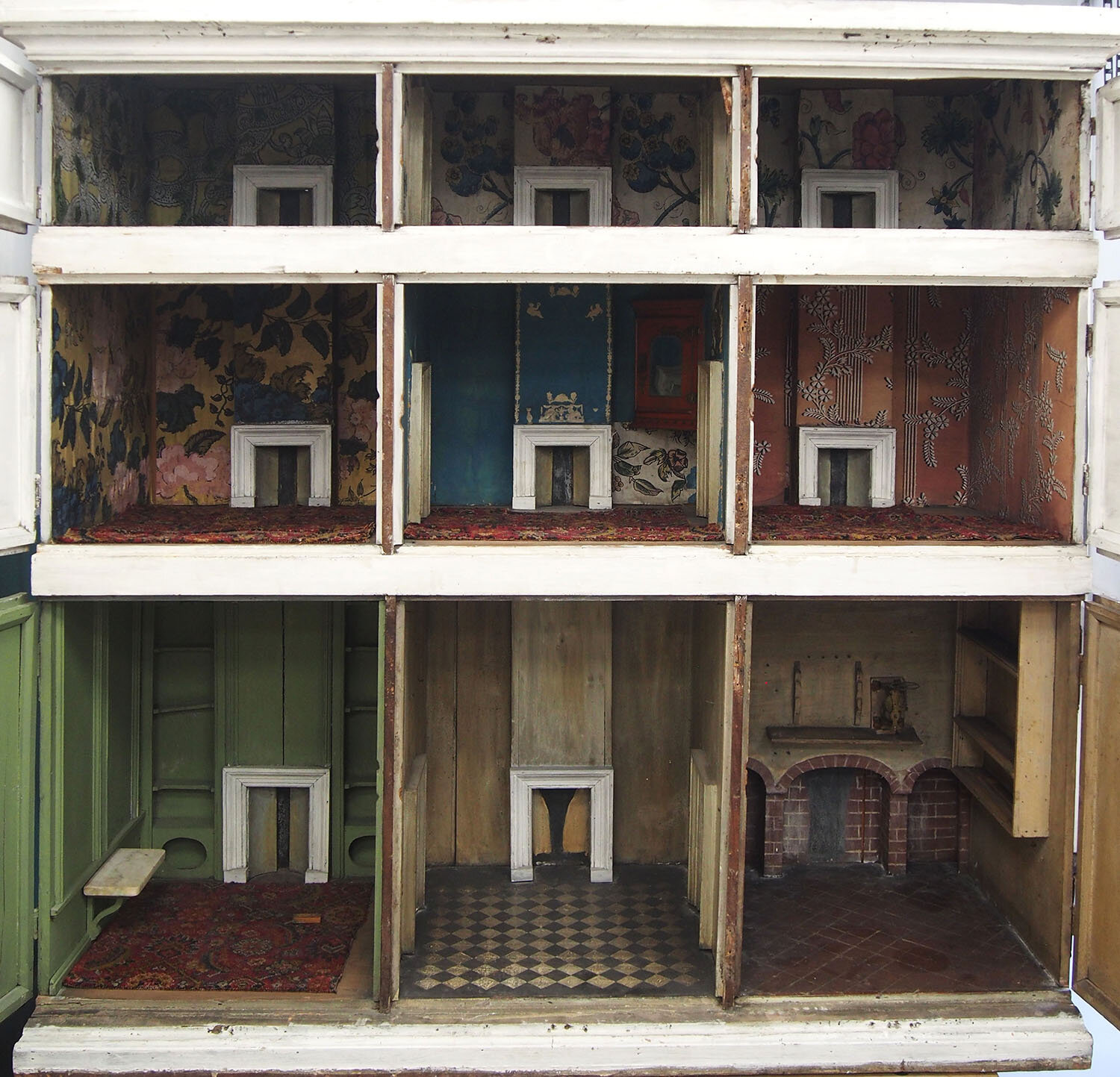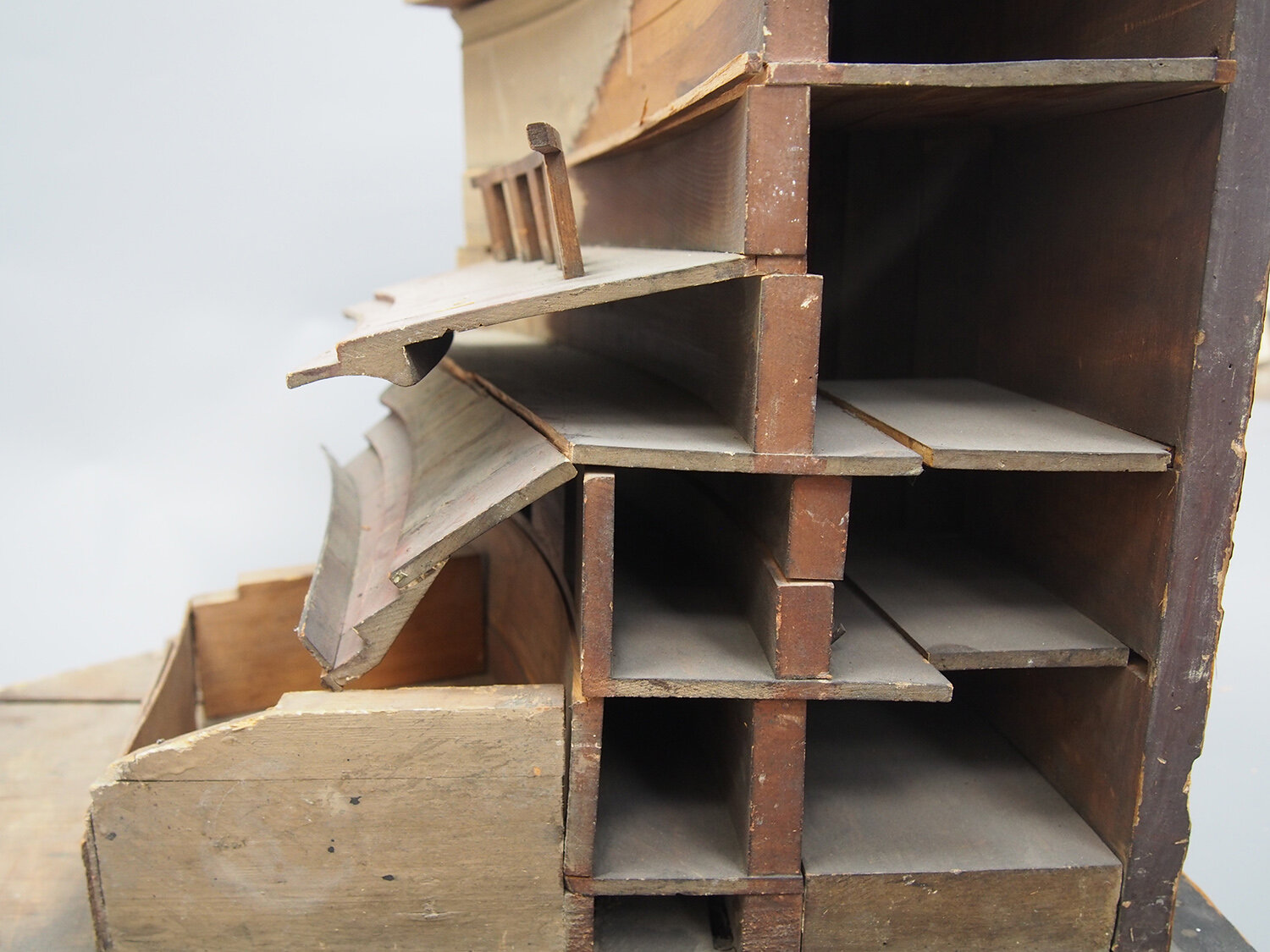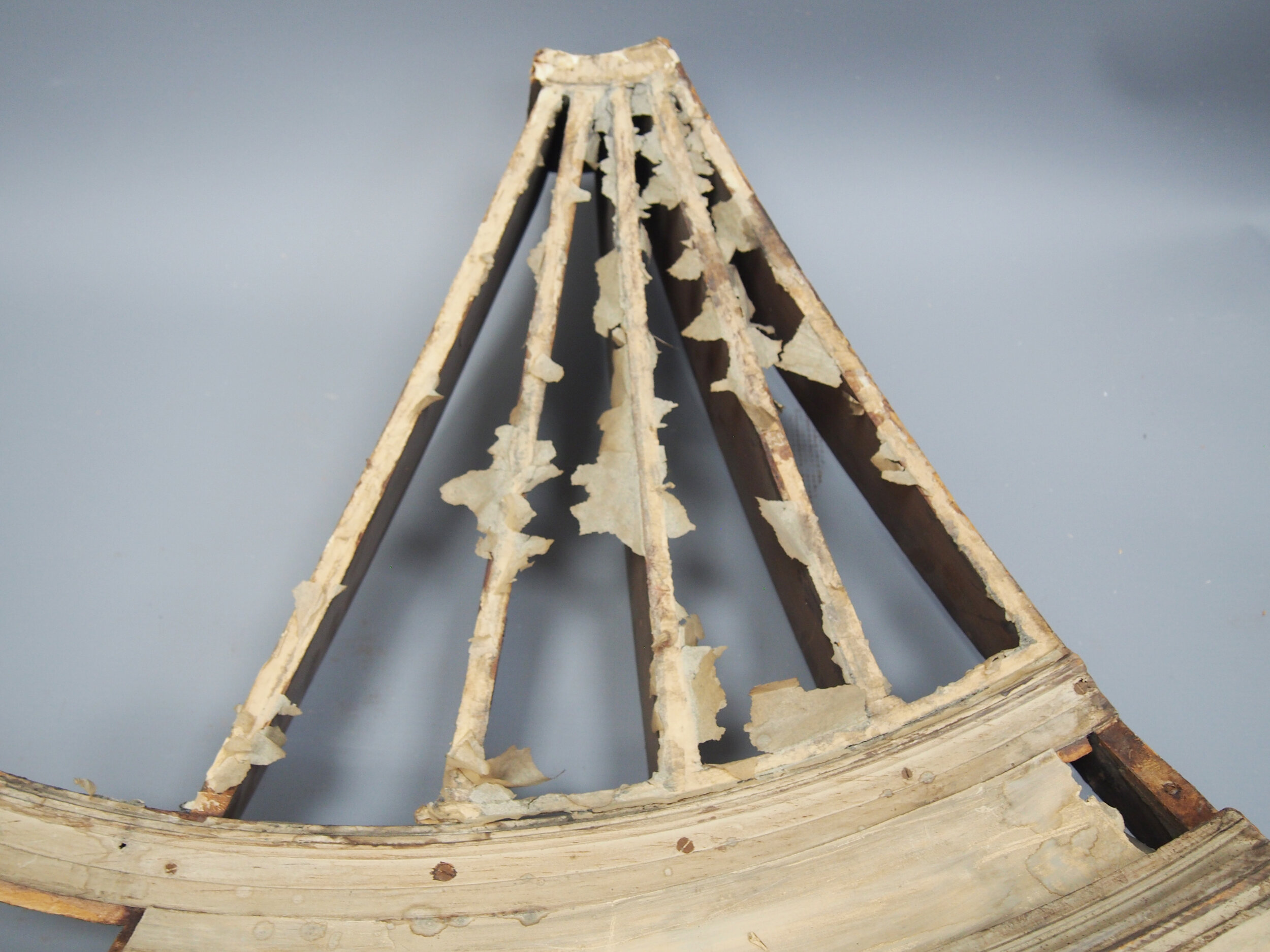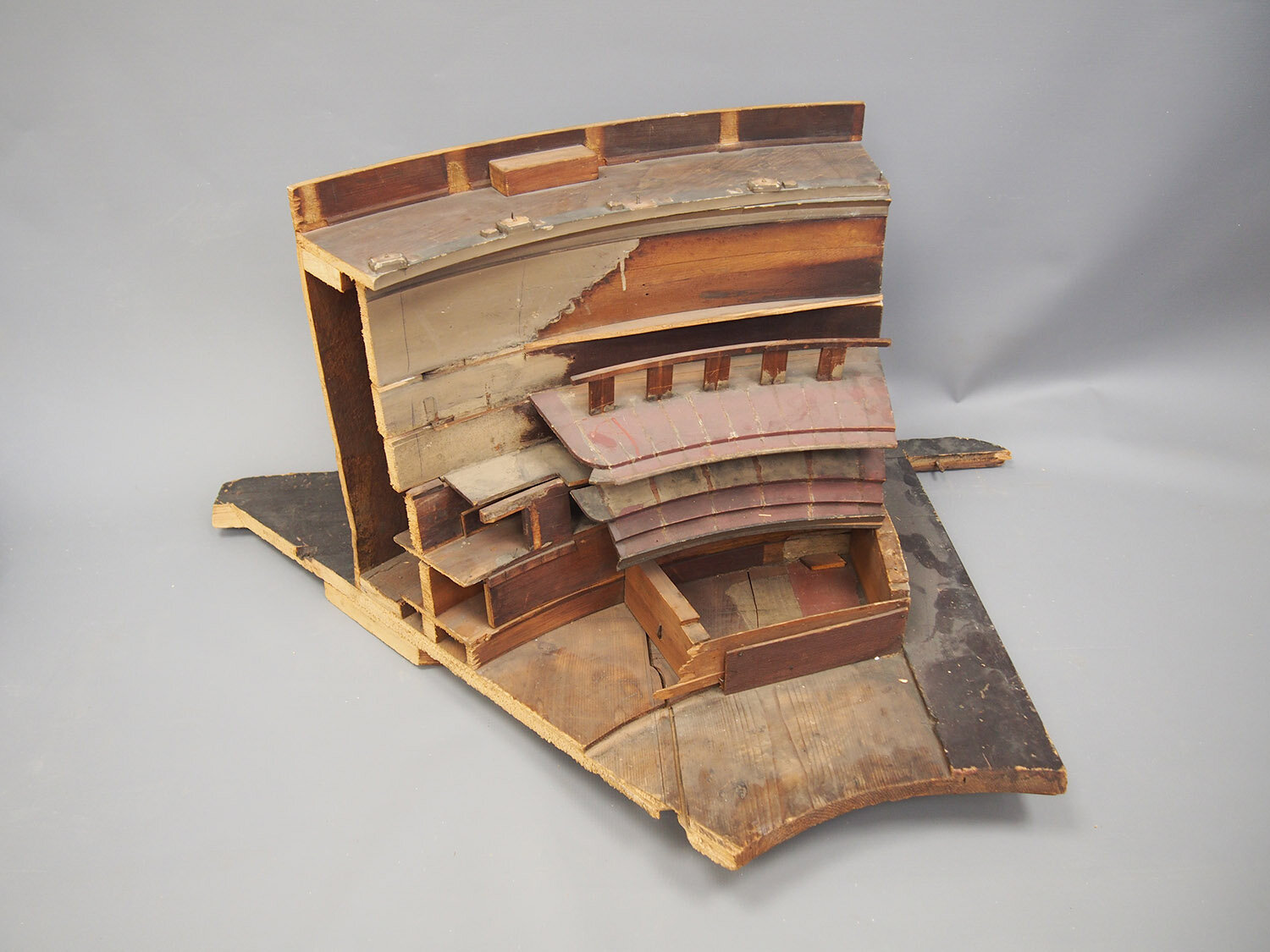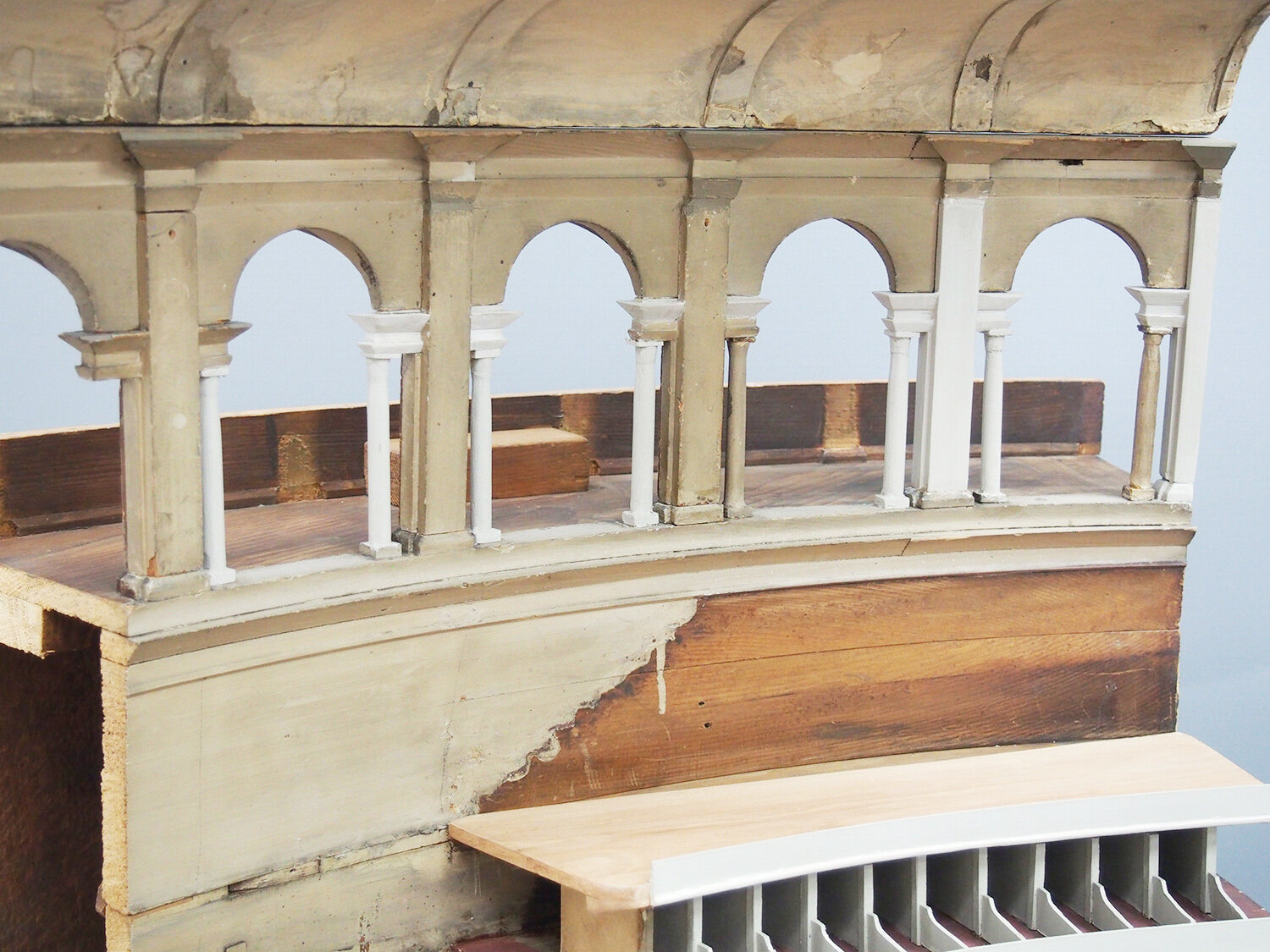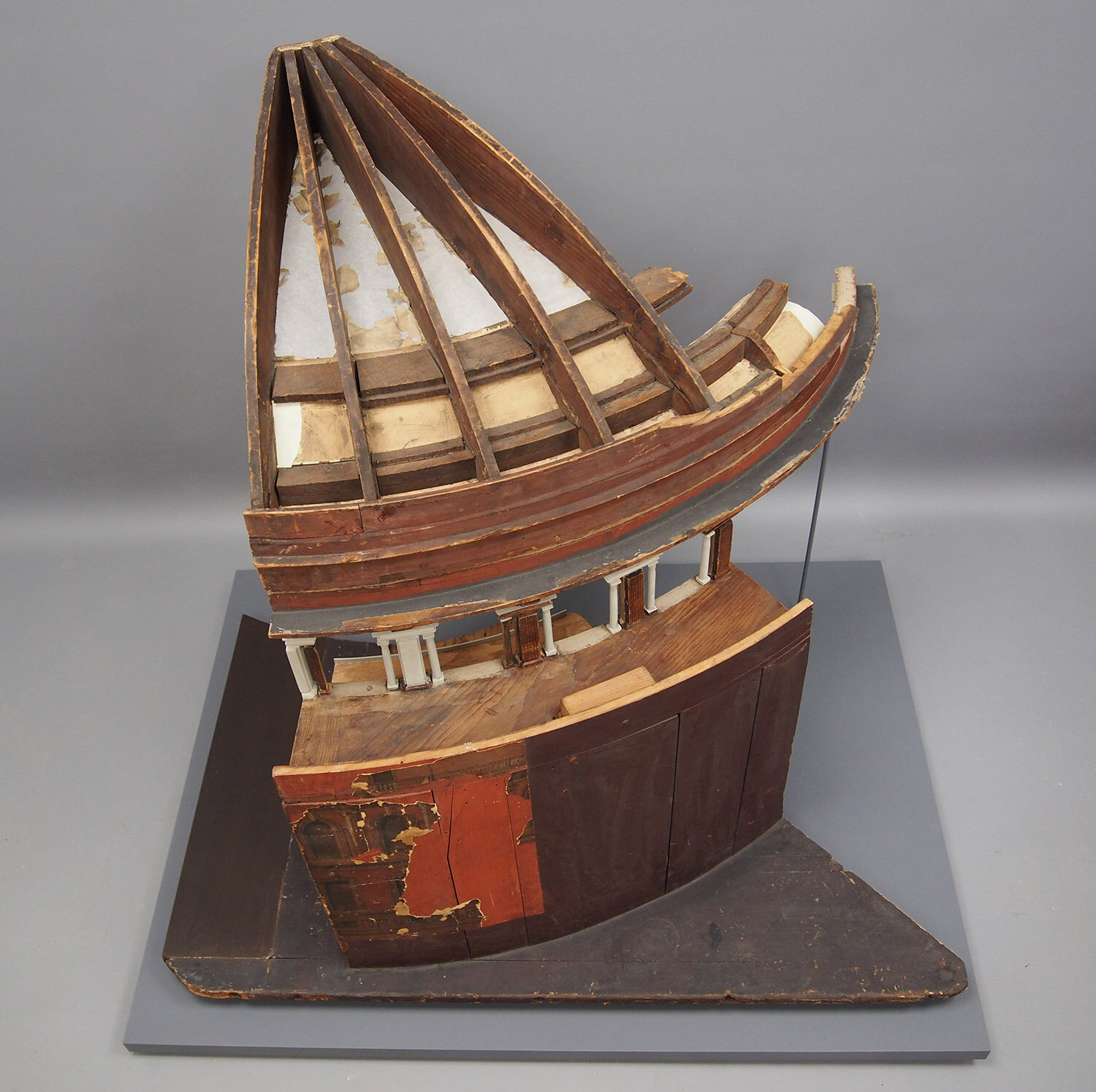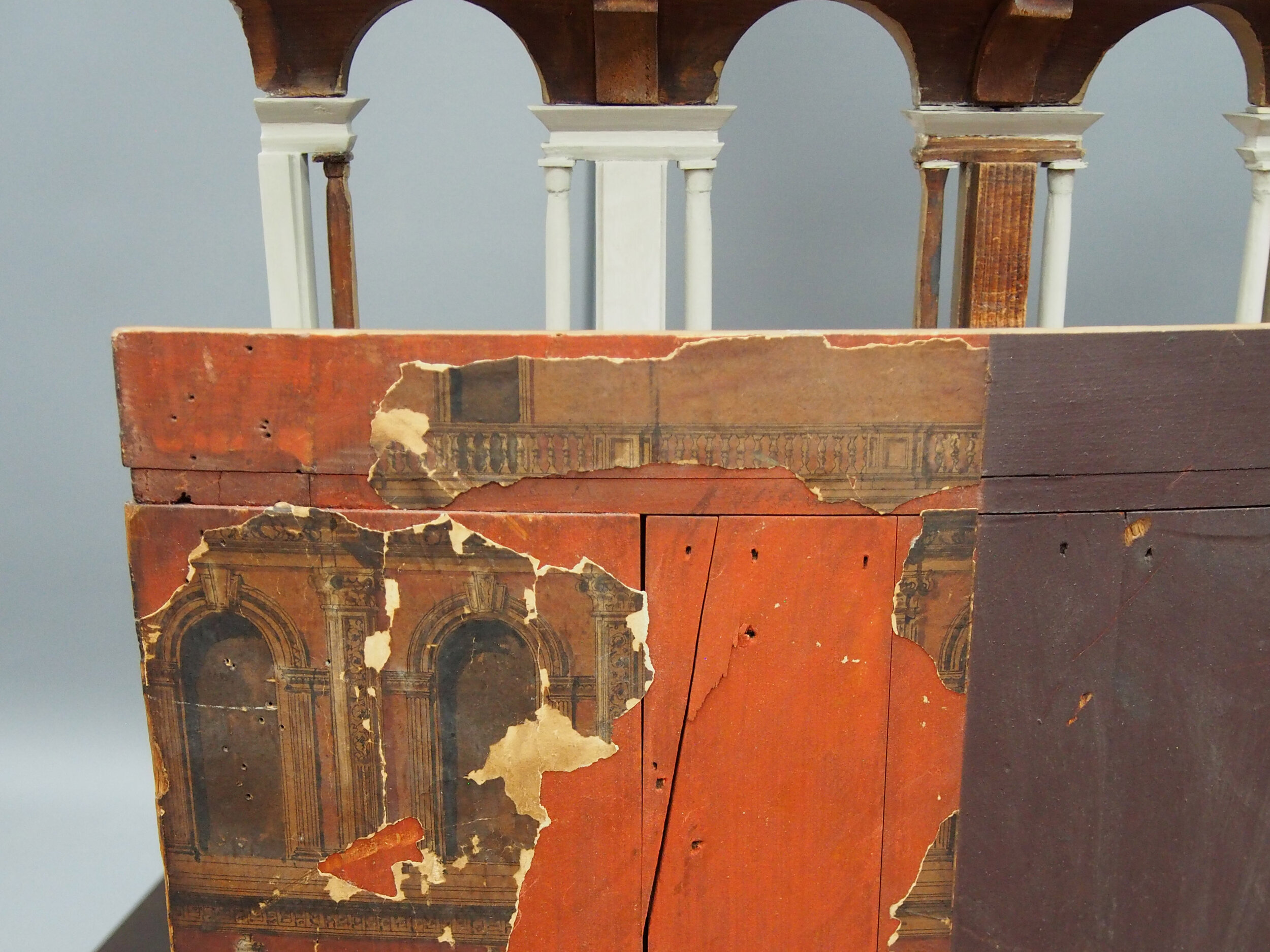conservation of objects & decorative arts
In addition to wood, furniture often comprises layers of paint and other finishes like shellac, decorative materials such as turtle shell, ivory, bone, brass, mother-of-pearl, stone, scagliola, paper, and leather, therefore we often work on objects that aren’t strictly furniture, but are made of these materials.
During treatment: ivory bird Private Client
After treatment: ivory bird Private Client
case studies
Westminster Abbey
Hanoverian Burial Vault
This is a model of the burial vault at Westminster Abbey for George II, the last monarch to be buried at the Abbey. Made in oak with mahogany coffins it required cleaning and stabilisation to ensure it was suitable for display.
After cleaning the unvarnished wooden surfaces, the breaks and loose elements were re-attached and structure was restored.
The model is displayed in the new Queen’s Diamond Jubilee Galleries at Westminster Abbey. All images of this object © Dean and Chapter of Westminster.
York Castle Museum
Doll’s House
We loved having this 18th-century doll’s house in the studio. Known as the Heslington or Yarburgh Baby House (referenced in Family Dolls' Houses (1973) by Vivien Greene and The Collector's History of Dolls' Houses (1983) by Constance Eileen King), it charmed us with its completely disproportionate scale and the real block printed wallpaper and cut silhouettes that decorated the walls.
We cleaned the surfaces, then reattached the main façade of the house, which had been removed. We also repaired and made mounts for the accompanying furniture and the dolls.
royal albert hall
Architectural Model
This was a working model that had been rediscovered in pieces tucked away at the Royal Albert Hall. Like many working models, it was in very bad condition; this quarter segment of the overall Hall was the only part that survived, and even so with many lost architectural elements like the columns, stalls, and ceiling. The curved paper ceiling was stained, punctured and torn, and almost completely lost at the top.
In order for it to make more visual sense, some of the missing architectural features like the columns and stalls were recreated using evidence from the original surfaces. These loss replacements were painted a sympathetic colour so that they matched tonally but were easily distinguishable from the original object.
We carried out paper repairs to the remaining paper, and replaced the upper part of the ceiling with a thin, translucent Japanese gampi tissue similar to the original Western paper but a bit stronger, leaving the remains of the original where they were.
We also made a sleek metal mount to support the structure for display.
st. alfege church
Peal Boards
This was a set of peal boards, which commemorate particularly impressive bell ringing, but you have to know a lot about bell ringing to understand. Luckily we understand the wood and gold part.
Peal boards are common in churches and often just stored in the bell tower, so exposed to a lot of dirt and dust. We carried out a careful cleaning on all of them, then applied a conservation varnish for protection. For several of them we also made custom frames.
holburne museum
Cork Architectural Models
The making of cork models of ancient architecture dates back to 16th century Italy and grew in popularity due to the Grand Tour, when cork models became common souvenirs to bring home. The pitted texture of the cork doesn’t look a million miles off old stone, and it’s lightweight and easily carved.
We had three of these models in the studio: ruins of the Forum and the temples of Vespasian and Vesta. We cleaned them and secured the loose elements.






